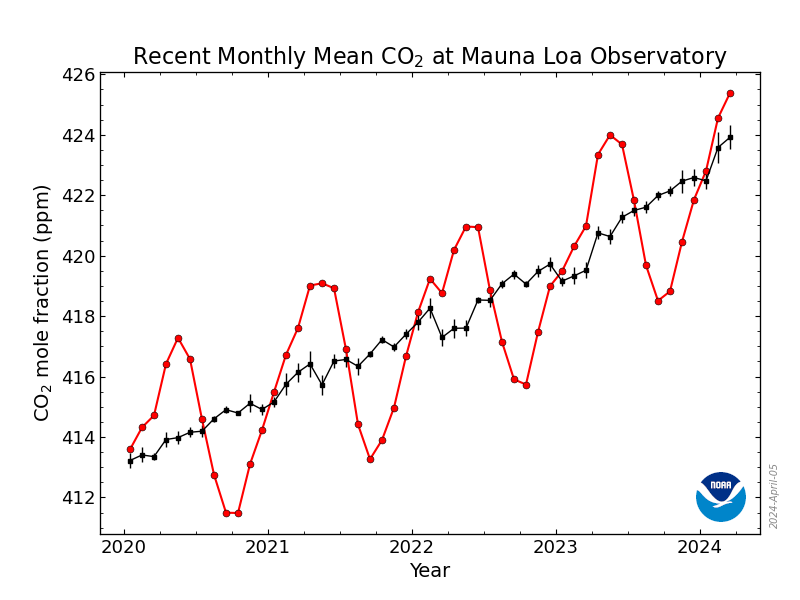Yes - with far, far higher CO2 concentrations than we see now. ...
True. I have posted that fact many times and explained it is not the LEVEL, but the RATE of CO2 release, dozens of times faster than ever before, that threatens us with extinction. I. e. The RATE of global warning is causing the rate of release CH4 to be faster than the OH- radical can destroy it (and destroy itself, yielding H2O and CO2 reaction products).
Only those ignorant of this "different rate fact" take comfort in fact that even double the current CO2 levels, that have been slowly achieved in Earth's history, had little effect on life forms. This time IS different because the RATE of CO2 release is very much greater than ever before as man now burns fossils fuels (stored solar energy) in a day more than was made in 1,000 years long ago.
Note also the last time live on earth came close to extinction, it was also (according to the latest understanding of the cause) due to the SUDDEN increase in CH4 release into the air - by a newly evolved micro organism (rapid blooming of archaea called Methanosarcina) that made CH4 from the accumulated organic matter.
The half-live of CH4 was a decade ago slightly less than 10 years, now it is 12.4 years. This is due atmospheric concentration of OH- falling with CH4 release faster than natural* production of OH- radical.
As I have posted before, the smaller than now amount of CH4 released in 2012, made the larger amount released in 2013, last longer in the atmosphere. This is what is important. Just by its self CH4 is already a positive feed back loop. CH4 is a much stronger GHG than CO2. By how much is a function of over what time period you want to consider. The most commonly quoted one is 100 years. Then even though very little released at "t=0" is still around the average GH effect is 25 times greater than CO2, most of which released at t= 0 will still be around in the atmosphere 100 years later (or if now part of a tree, etc. will have been replaced by a decaying tree, etc.)
If one wants to be an "alarmist" one can quote the 10 year average effectiveness of CH4 vs. CO2 molecule for molecule, and that shows CH4 is on the order of 200 times more effective as GHG. But that also in not the standard way to compare as weight by weight is used, not molecule for molecule. As CH4 has atomic weight of 18 and CO2's is 48, that version of the relative 10 year effectiveness is only 76 times more for CH4 (if I remember the data correctly)
In any case: This time is different because of the RATE of GW, which currently is mainly driven by CO2 (as CH4's atmospheric concentration is now much smaller but rapidly growing because both the amount annually released is and the atmospheric life time is too.)
* I have started to consider how the atmospheric concentration of OH- radical might artificially be economically increased to stabilize CH4 concentration at only ~5 times currently levels. Then CH4 would dominate the CO2 effect on global warming, but man might avoid extinction. I have an idea, but need to do a little more research on it.



